
views
X
Trustworthy Source
Mayo Clinic
Educational website from one of the world's leading hospitals
Go to source
It might feel a little awkward at first, but with practice, you should find this to be a useful walking aid.
Holding and Using Canes
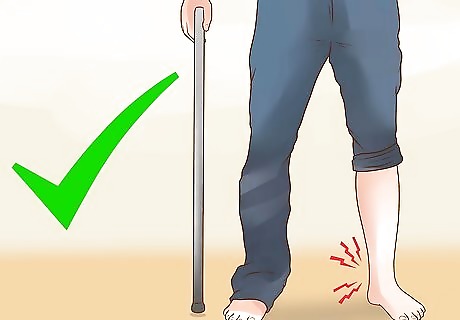
Hold the cane using the hand that's on the same side as your good leg. It sounds counterintuitive, but it's true. If your left leg is hurt, you should be holding the cane in your right hand. If your right leg is hurt, hold the cane in your left hand. Why is this? When humans walk, we stride with our feet and swing our hands at the same time. But when we stride with our left foot, we swing with our right hand; when we stride with our right foot, we swing with our left hand. Handling a cane in the hand opposite our injury replicates this natural arm movement, giving your hand an opportunity to absorb some of your weight while you walk. If you're using a cane for better balance, consider putting it in your non-dominant hand so that you can continue to use your dominant hand for everyday tasks.
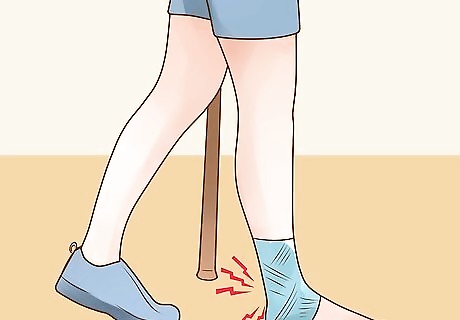
Start walking. When you step forward on your bad leg, move the cane forward at the same time and put your weight on them together, allowing the cane to absorb more strain than the leg. Don't use the cane to step with your good leg. As you become accustomed to the cane, it will ideally feel like a natural extension of yourself.

To walk up stairs with a cane, put your hand on the banister (if available) and place your cane in the other hand. Take the first step with your strong leg, then bring the injured leg up to the same step. Repeat.
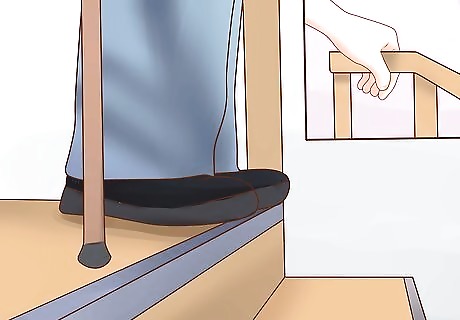
To walk downstairs with a cane, put your hand on the banister (if available) and place your cane in the other hand. Take the first step with the injured leg and the cane at the same time, then bring down your strong leg. Repeat.
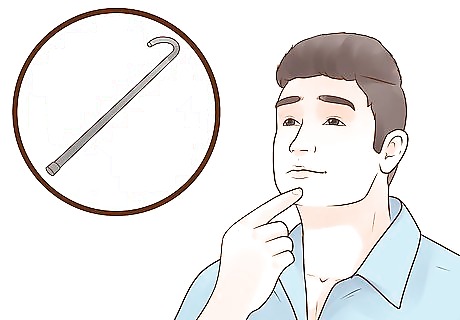
Assess how much help you need. Canes are the lightest walking aid, and transfer weight to your wrist or forearm. They are generally used to aid light injuries or to improve balance. A cane cannot and should not sustain a large portion of your body weight.
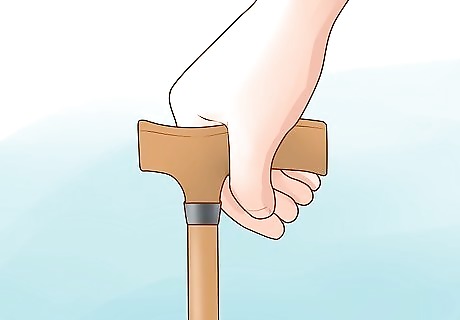
Choose your style. Canes come in a variety of forms in order to meet the needs of different users. Variables to assess include: Grip. Some canes are meant to be held with your palm and fingers, while others can also provide support for your forearm. Whatever you select, make sure the grip feels solid and manageable, not slippery or too big. Shaft. The shaft is the long part of the cane, and can be composed of wood, metal, carbon fiber polymer and other materials. Some shafts are collapsible for easy portability. Ferrule. The tip or bottom of the cane is usually covered in rubber to provide better stability. Some canes have three or four ferrules at the bottom instead of just one; this enables them to carry more weight. Color. Although many canes are plain or unadorned, you don't have to settle for a pedestrian grey cane if you don't want to. You may even be able to find a customizable cane that matches your personality as much as it supports your frame.
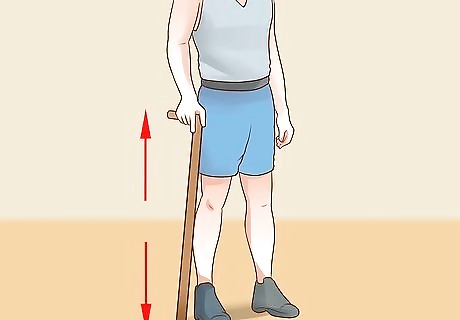
Check the length. To select the proper length for a cane, stand up straight with your shoes on and arms at your sides. The top of the cane should reach the crease on the underside of your wrist. If the cane is a proper fit, your elbow will be flexed 15-20 degrees when you hold the cane while standing. Cane length is usually about one half the cane user's height, in inches, wearing shoes. Use this as a rule of thumb. If your cane is too small, you'll need to bend over in order to reach it. If your cane is too big, you'll need to lean over onto your injured side in order to use it. Neither option is ideal. A perfectly fitted cane will keep you upright while providing support.
Holding and Using Crutches
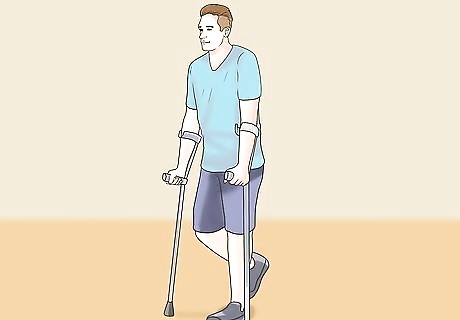
Assess how much help you need. If you cannot put any weight on an injury, such as if you're recovering from knee or foot surgery, then you'll need one or two crutches (preferably two for improved balance). They'll sustain weight better than canes will, and allow you to get around with only one leg.

Get the height right. Most crutches are forearm or underarm crutches. After you've been told by a doctor to use one or the other, the only thing you need to worry about is the fit. For underarm crutches, the top should be an inch or a little more below your armpit and the grips should be even with your hips.
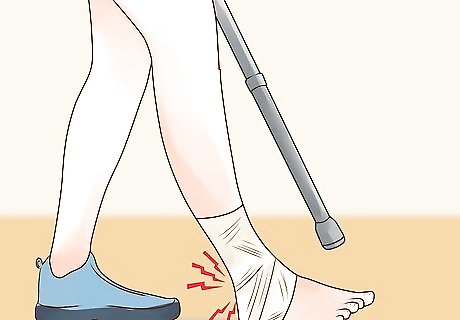
Start walking. Place both crutches on the ground about a foot in front of you, and lean forward slightly. Move as if you're going to step with your injured side, then shift the weight to the crutches and swing forward between them. Come down on your uninjured leg while holding your injured leg elevated so that no pressure is placed on it.
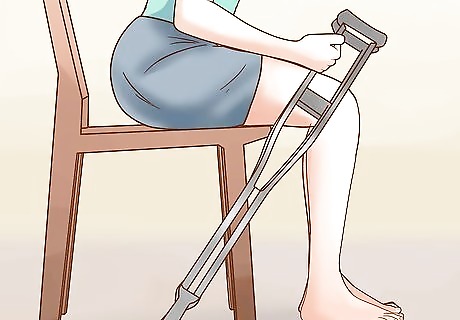
Learn how to sit down or stand up on crutches. Put both crutches together in the hand on your good leg side, like a long and extra sturdy cane. Slowly lower yourself down or up, using the crutches for balance.

Learn how to go up or down stairs with crutches. Start by putting both crutches under one arm, parallel to the floor. Then, you can either hop up or down the stairs on your one good leg, using a banister for assistance. Alternatively, you can lay your crutches down on steps, sit down, and pull them along with you as you use your good leg to sit on the next step.

















Comments
0 comment